Aug 6, 2021
Sengawa, don't miss out on Chofu’s cultural side
Spend a happy half day in Sengawa, an area of Chofu so content to bask in its wealth of cultural institutions, quality coffee and cafe scene, and delightful curiosities that it has forgotten to tell anyone about it.
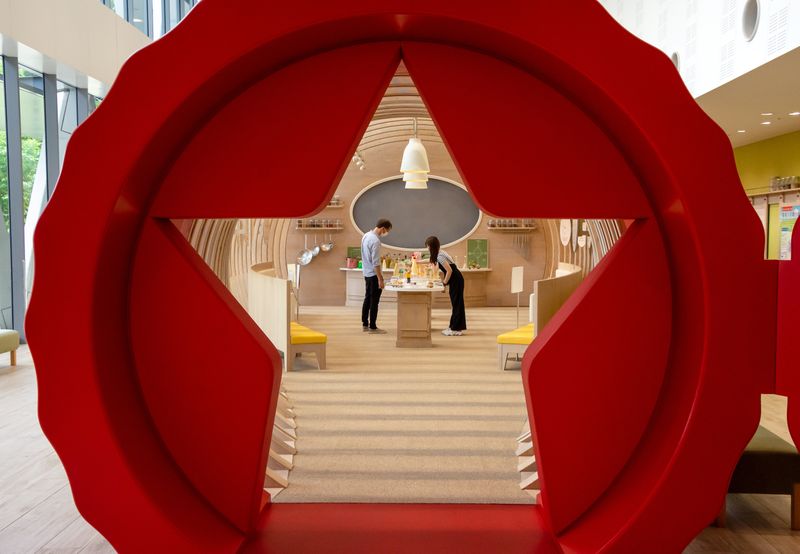
(Kewpie Mayo Terrace - one of the fun, and more curious, things to do in Sengawa, Chofu)
It’s probably true to say that many visitors to Chofu are drawn to the city’s show-stopping attractions like ancient Jindaiji Temple or the expansive Jindai Botanical Gardens. Or maybe they’re in a hurry to take in a sporting spectacle at the city’s Tokyo Stadium and other world-class sporting venues.
Racing into town on trains from nearby Shinjuku, for some visitors to the city then Sengawa perhaps indicates little more than the distance remaining to an approaching final destination rather than a destination in and of itself.
On the one hand that’s a shame, because there are plenty of things to do in Sengawa. The area truly rewards with interesting museums, world-renowned architecture, a creative coffee and cafe scene, secret-garden-like green spaces and an atmosphere reflecting the kind of warm glow that comes with knowing when you’re onto a good thing.
On the other hand though, maybe it’s not such a shame that people should race by on their way to somewhere else -- it leaves time, space and a sense of calm with which the rest of us can explore and enjoy the area. Which is what team City-Cost was lucky enough to have done recently.
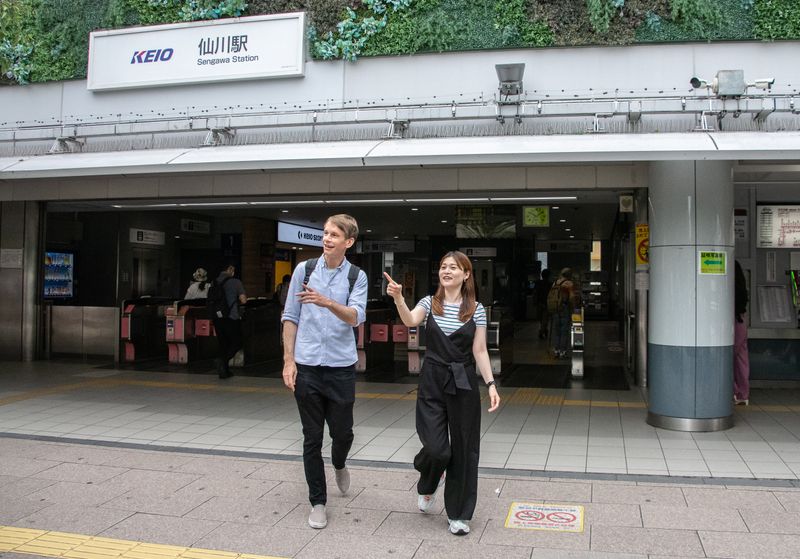
(Arriving at Sengawa Station on a train from nearby Shinjuku)
Arriving at Sengawa Station on a Keio Line train from Shinjuku we took a moment to review our relaxed half-day itinerary of things to do in Sengawa in the shade of one of the station-front cherry trees. Around 80 years old, these grand trees were saved from the jaws of development by Sengawa locals for whom they are something of a town icon.
First on the itinerary then ...
Culture in Sengawa
Culture is served-up to Sengawa visitors courtesy of the Tokyo Art Museum, Sengawa Theater and other buildings designed by world-renowned architect Ando Tadao. Savvy literary types, with a solid grasp of Japanese, might also want to bask among the books of Showa-era Japanese novelist and philosopher Saneatsu Mushakoji at the town’s dedicated memorial museum.
Among team City-Cost however, we had our sights set on something a little more high-brow than fine arts … world-renowned mayonnaise, of course!
Perhaps it should come as little surprise that among Japan’s myriad of weird and wonderful museums, and hands-on experiences, there is one dedicated to mayonnaise. The surprise might be to find it in Sengawa rubbing shoulders with the aforementioned temples to the arts.
Mayo Terrace, a short walk west of Sengawa Station, showcases and celebrates the Kewpie brand of mayonnaise at the Japanese manufacturer’s former factory site. Passing through the gate, a security station in the design of an egg gives an early taste of the experience to come.
Like the right balance of ingredients coming together to create the perfect mayonnaise, a nice balance of stats, insights and colorful exhibits combine to create super fun facility tours. Yes, mayonnaise may have become a dinner table staple for much of the world, tours of the Mayo Terrace facility though are anything but ordinary.
So it was then that team City-Cost had our cameras ready for photo ops in the Salad Hall where you can perch on veggie-themed seats and pose in front of the iconic Kewpie mayonnaise bottle cap. (Pop quiz! Why the star shape?)

(Perched on a piece of vegetable in the Salad Hall of Kewpie Mayo Terrace, Sengawa)
The Kewpie brand of mayonnaise was launched in 1925 and is fast closing in on a 100-year anniversary. The Kewpie Gallery offers the chance for some light reflection on this near century of brand history as well as on the Spanish mediterranean roots of mayonnaise itself.
From past to present, pass through the star-shaped bottle opening and into the Mayonnaise Dome for a look at the current output of the Kewpie brand and a little taste of the secrets that go into making a great mayonnaise. Fun stat (one of many served up during the tour) -- the “dome” itself, made from wood and in the shape of a mayonnaise bottle, is 500,000 times the size of the regular Kewpie mayonnaise bottles.
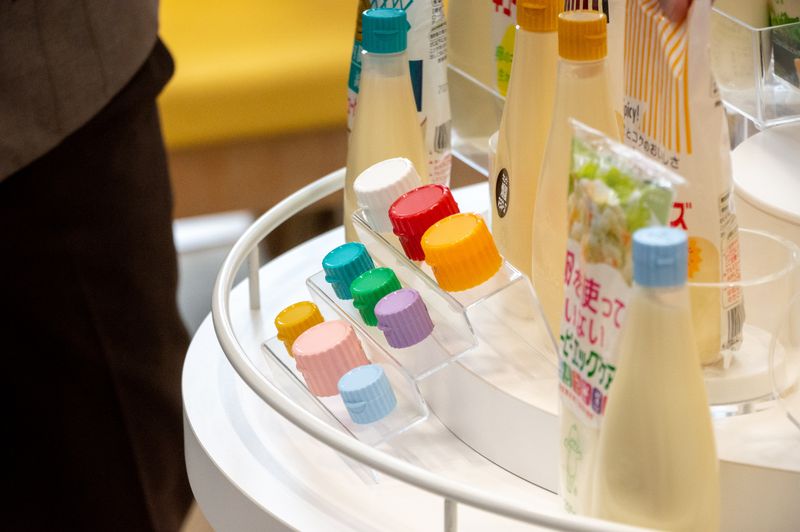
(Color caps distinguish types of mayonnaise and similar products from Kewpie, Mayonnaise Dome, Kewpie Mayo Terrace, Sengawa)
We had a blast being blasted with decontaminating air as we entered Kewpie’s Factory Walk where we were taken behind the scenes of the manufacturing process -- from bottle design (pop quiz answer: the star shape proved best for mayonnaise to hold), through delivery and inspection of ingredients to ... Kewpie mayonnaise being enjoyed at zero gravity by astronauts in space. (Amidst all the space-age tech we couldn’t help but smile at the humble use of sticky tape on cap and bottle to prevent things drifting off.)
Back here on earth insight into the role of eggs in the manufacturing process, provided during the Factory Walk, was particularly mind boggling. In the old days around 100 workers would line up and break the eggs by hand with each worker breaking some 40 eggs every minute, we were told.
Today machines are used not only to break the eggs, but also to separate the yolk from the egg white. Can you guess how many eggs one of these machines can handle in one minute? It’s a lot, and while only the yolk is used in the production of mayonnaise, the people at Kewpie have been pursuing sustainability in their use of eggs since the 1950s with remaining egg whites and shells being used in the production of products as diverse as macarons and studless tires.
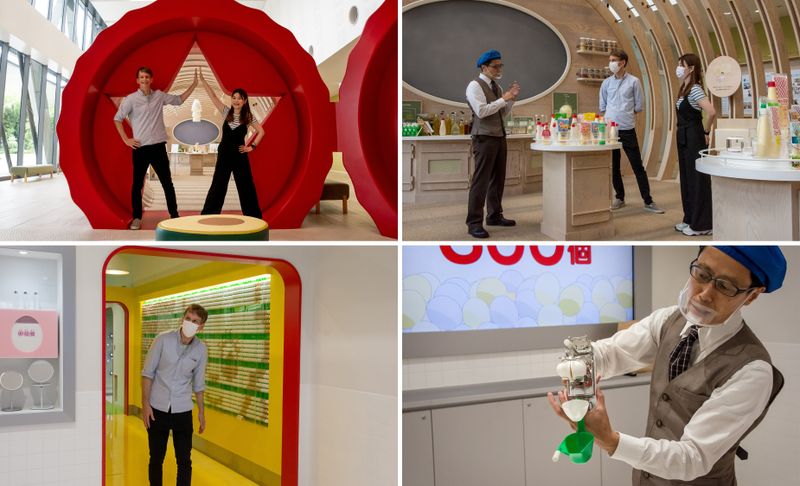
**Tours of the Kewpie Mayo Terrace in Sengawa are currently being conducted online only as part of virus-prevention measures. Prior to the outbreak of the novel coronavirus, on-site tours were available by reservation.
Coffee in Sengawa
From Mayo Terrace it’s an easy walk across the railway tracks to an area of shoutengai, modern shopping plazas, and eateries south of Sengawa’s train station.
Here is the hub of Sengawa’s coffee scene where the connoisseur has no shortage of options at which to see and be seen sipping on an original brew, be it from street-savvy organic joints, outside in the breezy plazas, or among the masses at a marquee chain.
Ebisu-based Sarutahiko Coffee has its Atelier Sengawa store here in the heart of town, from which the founder’s passion for coffee and life flows, bringing a bit of Ebisu’s smart street style to the Sengawa scene.
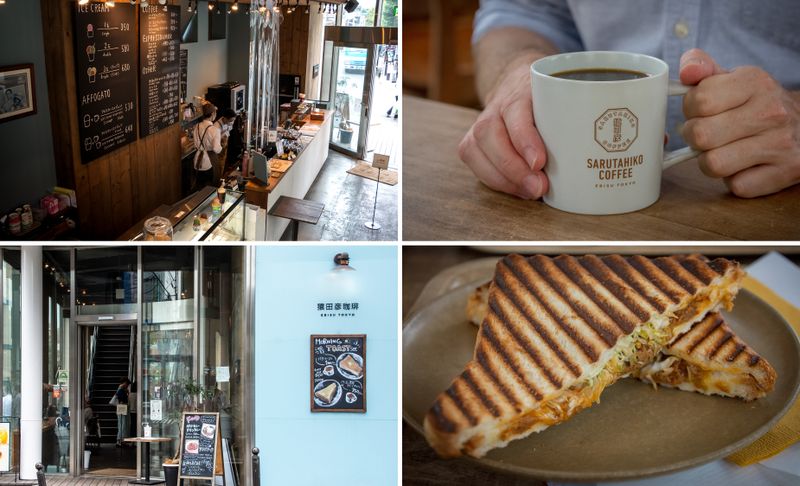
(Sarutahiko Coffee’s Atelier Sengawa store)
For team City-Cost the two floors of the bright, airy atelier offered an easy balance between chain-store accessibility and the kind of vibe that says, “we know what we like in our coffee.”
It’s also the kind of relaxed space where, over a fine brew, people can crack open a good book or perhaps reflect with similar minds on the meanings of works of art or the nuances of theatrical performance (befitting of the French “atelier” as being a workspace for practitioners of fine arts) … or mayonnaise, in the case of team City-Cost.
So it was over piping hot pour over (drip) coffees and moreish hot sandwiches of BBQ pulled pork and melted cheese we enjoyed a review of our Kewpie pics. (Note -- more adventurous palettes might want to try Sarutahiko’s caramel pudding mango “jellatte.” Give it a good shake!)
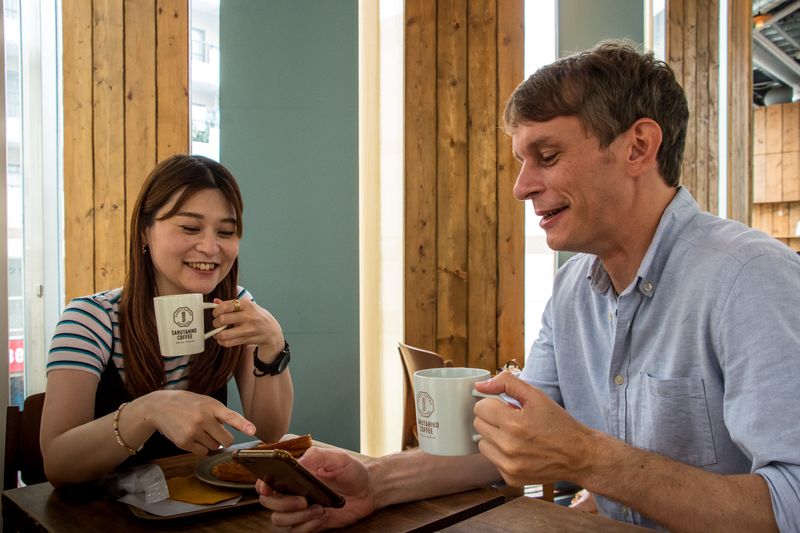
(Atelier Sengawa is a relaxed spot at which to enjoy a fine brew and pour over your Sengawa pics)
Atelier Sengawa can be found in the modern P’s Square complex around 100m south of Sengawa Station.
Shopping in Sengawa
Finish your coffee, or get it “to go,” and pound the streets of Sengawa for some window shopping.
South of the station Sengawa’s shopping scene blends (to use coffee parlance) what on paper would seem an unlikely mix of modern, design-conscious shopping complexes selling the accoutrements and accessories of modern living with unashamedly retro shoutengai streets crammed with stores selling, well, everything else.
At street level though it all comes together nicely, making for an area that is as fun to explore as it is easy.
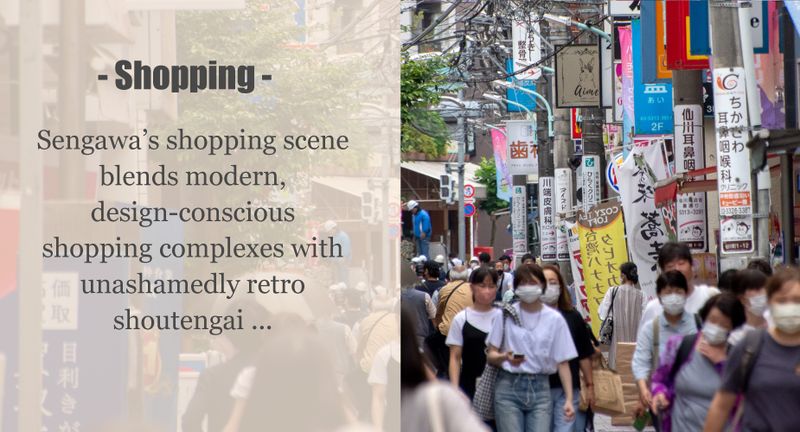
Among team City-Cost we particularly enjoyed the main shoutengai known as Harmony Town Sengawa which rewarded our stroll with the opportunity to see local life move at its own pace between the stores and eateries.
The musical reference in the name “Harmony Town” might seem odd at first but with the shoutengai pointing the way to a nearby music school other sections of the atmospheric area have adopted similar musical monikers, “Harp Town” and “Piano Town” among them.
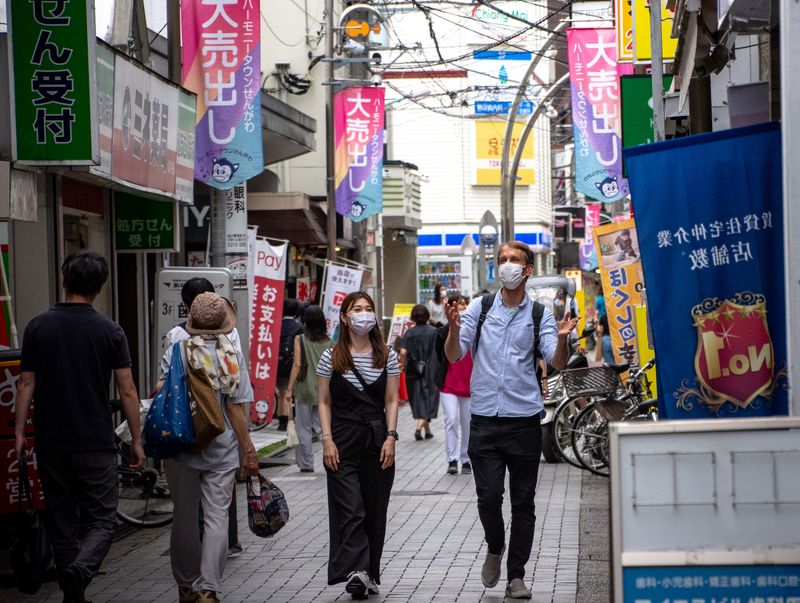
(Window shopping along the shoutengai of Sengawa, Chofu)
Green spaces in Sengawa
After the charming clutter of the shoutengai, peace and quiet can be sought among the streets that lead west away from Sengawa’s commercial and cultural hub.
Here in the pleasant Tokyo suburbs, we kept our eyes peeled for Saneatsu Park.
Named after the previously mentioned novelist and philosopher Saneatsu Mushakoji (1885 - 1976), Saneatsu Park occupies the grounds of the writer’s former garden and home (the latter of which can be viewed from outside). It’s right here, in this quiet corner of Chofu, that Mushakoji spent his latter years.

Rather than swings and slides though, the park has the feel of a secret garden from childhood fantasy. We had great fun leaving the city of Tokyo behind, following the park’s narrow and winding trails through the trees and bamboo groves, and around Mushakoji’s former home, to reveal quiet spring-fed ponds and a quaint pavilion from which to overlook the still waters.
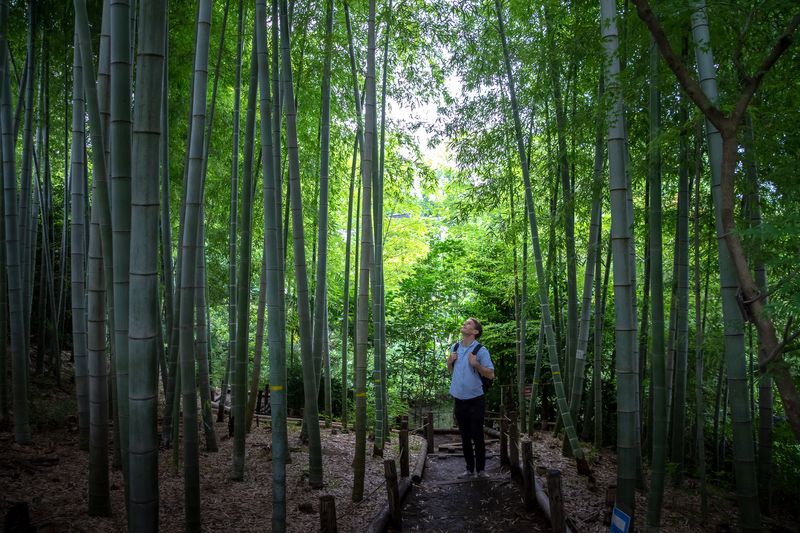
(Tokyo appears to disappear as you explore Sengawa’s Saneatsu Park)
Saneatsu Park (free to enter) is home to a variety of flowering trees including plum, magnolia, cherry, hydrangea, and camellia. The park’s iris garden is also home to a kind of algae which, in season, emits a golden glow as it reflects the sunlight. It’s rare to see such algae in Tokyo.
The Mushakoji Saneatsu Memorial Museum (Admission: adult 200 yen / child 100 yen) is just south of the park, but you don’t have to be well versed in your Japanese novelists to enjoy the park. That said though, sitting under a quiet pavilion overlooking calm waters surrounded by trees, with Tokyo but a distant memory, we felt inspired enough to contemplate composing some prose of our own, but not on an empty stomach ....
Sweets in Sengawa
Bakeries, cafes, and food carts offer up plenty of satisfaction for the sweet tooth in Sengawa.
Looking for something colorful and photogenic to put in our stomachs before heading home we headed back to the area south of the station where, in the breezy plaza behind Atelier Sengawa, we found the Pivot Spot food cart, serving filling crepes and and fresh juices from the back of a delightfully retro van.
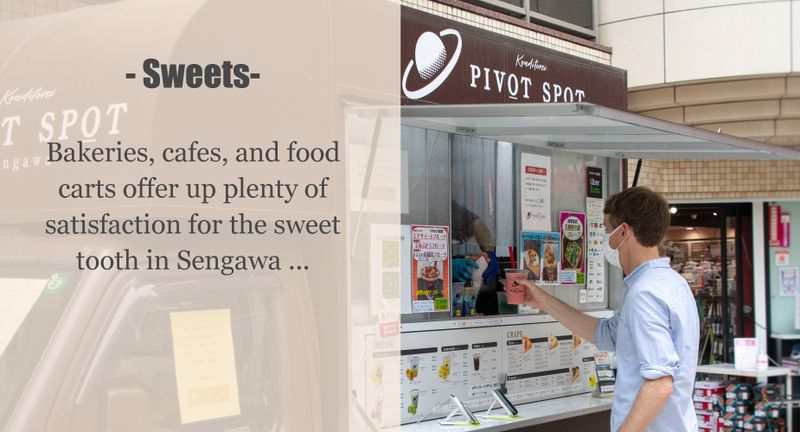
The maple crepe, with mixed nuts and chunks of handmade cake, would give us more than enough energy to make the journey back home across town. Leave plenty of stomach room! For drinks we went with strawberry yogurt and lemonade. For a multiple fruit burst the “açaí fruits,” packing in banana, strawberry and kiwi, was recommended at the time of visiting.
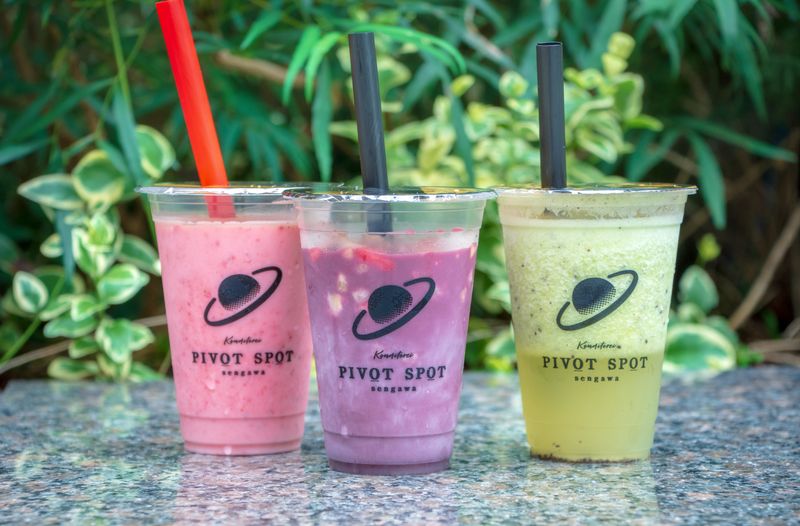
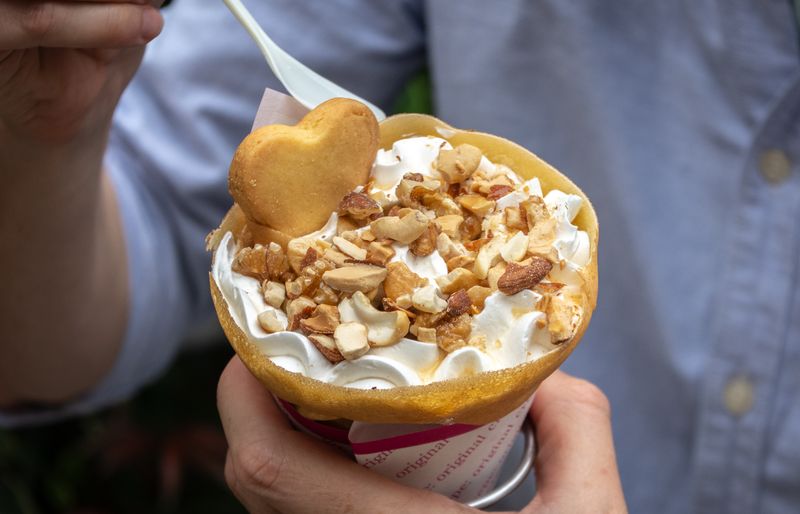
The Pivot Spot food cart offers outdoor seating at which to kick back and watch the Sengawa foot traffic pass by. Despite doing business out the back of a van, all manner of card and cashless payments can be accommodated here.
Make no mistake, there are plenty of things to do in Sengawa making the area a worthy destination in and of itself, you just get the impression that Sengawa is comfortable enough in its own skin not to feel the need to brag about it. Or just too chilled maybe. Either way, grab a coffee, take in some culture, and feel likewise.
Keio Line section / semi-express trains whisk visitors between Shinjuku and Sengawa stations in a little over 15 minutes. Local trains make the journey in around 25 minutes.
Four to five hours should be enough to cover the above itinerary at an unhurried pace, the best pace at which to see Sengawa really. Coffee enthusiasts, art connoisseurs and foodies especially, might want to make a day of their visit to Sengawa, if not make it a regular spot to visit and hang out.
This article was supported by Chofu City.



0 Comments